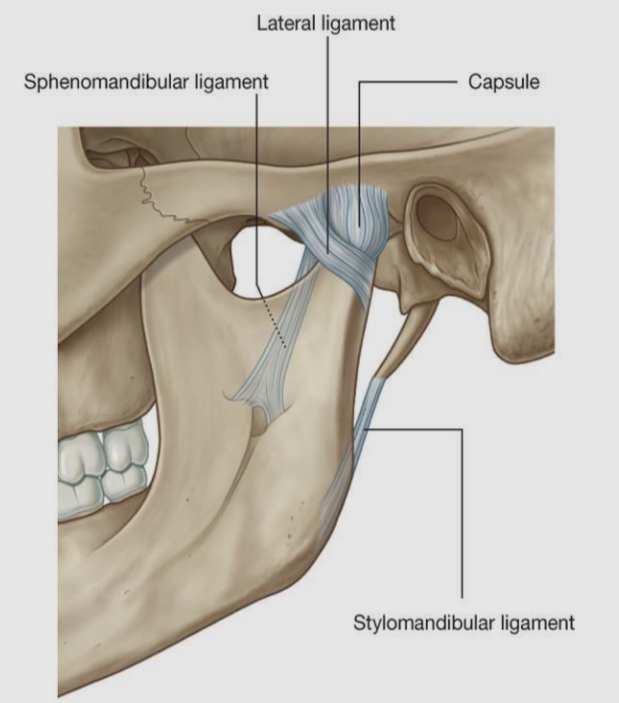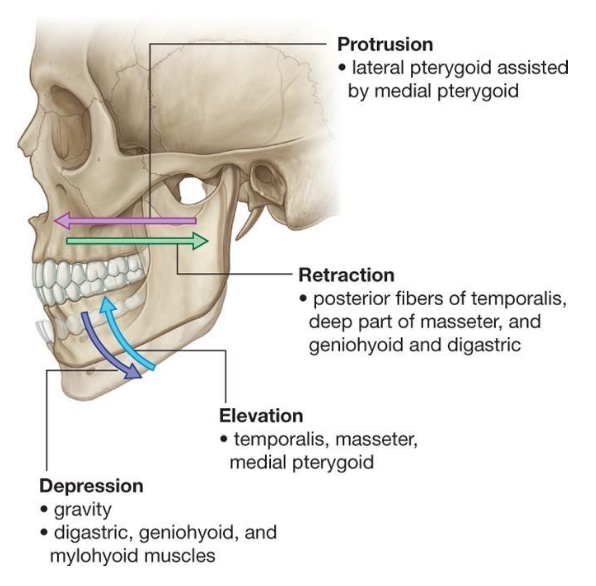UNIT 6 - Skull & Mandible
1/21
There's no tags or description
Looks like no tags are added yet.
Name | Mastery | Learn | Test | Matching | Spaced |
|---|
No study sessions yet.
22 Terms
How many bones are in the skull ?
11 paired bones
6 unpaired bones
What bones make up the skull ?
Frontal
Parietal
Occipital
Temporal
Mandible
Maxilla
Zygomatic
Sphenoid
Ethmoid
Nasal
Palatine
Inferior Nasal Conchae
Where is located the glenoid cavity ?
In the temporal bone
What are the different processes of temporal bone ?
Mastoid process
Zygomatic process
Styloid process
Where does the masseter muscle attach to ?
temporal bone
zygomatic bone
mandible
What are the different portions of palatine bone ?
horizontal plate (hard palate)
perpendicular plate (walls of the nasal and orbital cavities)

What are the processes of maxillary bone ?
alveolar process
palatine process (articulates with the hard palate)
frontal process
zygomatic process
Which parasinus is the largest ?
Maxillary paranasal sinus
What are the different sinuses of the skull ?
Maxillary sinuses
Frontal sinuses
Ethmoid sinuses
Sphenoid sinuses
What is the muscular particularity of the mandible ?
all the masticatory muscles attach to it
What is mandible ramus doing ?
connects mandible body to mandibular condyles
Which muscles are inserting to the mandibular ramus ?
Masseter
Medial pterygoid muscles
Which muscle is inserting through the coronoid process of the mandible ?
Temporalis muscle
What type of joint is TMJ ?
Synovial joint
What are the key structures of the TMJ ?
Mandibular condyles
Glenoid cavity
Articular tubercle

What is the key feature of the articular disc of TMJ ?
avascular and aneural
What does upper joint cavity allow ?
Translational movements
What does lesser joint cavity allow ?
Rotational movements
What are the characteristics of the articular capsule ?
fibrous covering surrounding the joint
contains synovial fluid for lubrication and nourishment
What are the different ligaments of the TMJ ?
lateral ligament (temporo-mandibular)
spheno-mandibular ligament
stlyo-mandibular ligament

What are the TMJ movements (EXAM !!!!!!!) ?
opening and closing
protursion and retrusion
lateral movements

Where does nasopalatine nerve pass ?
through incisive foramen